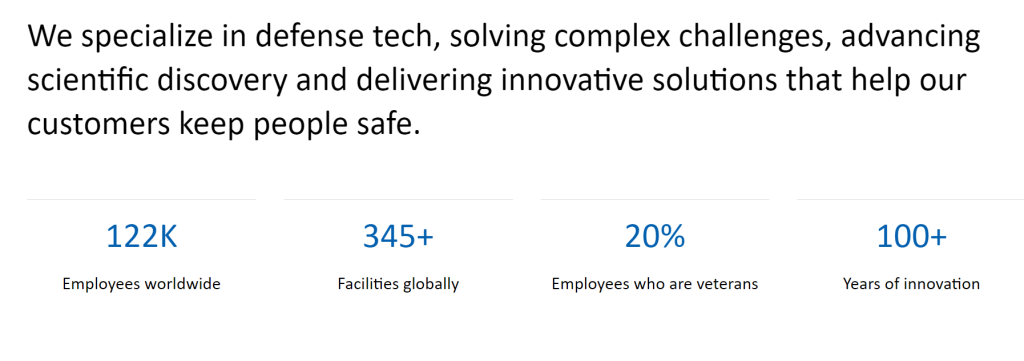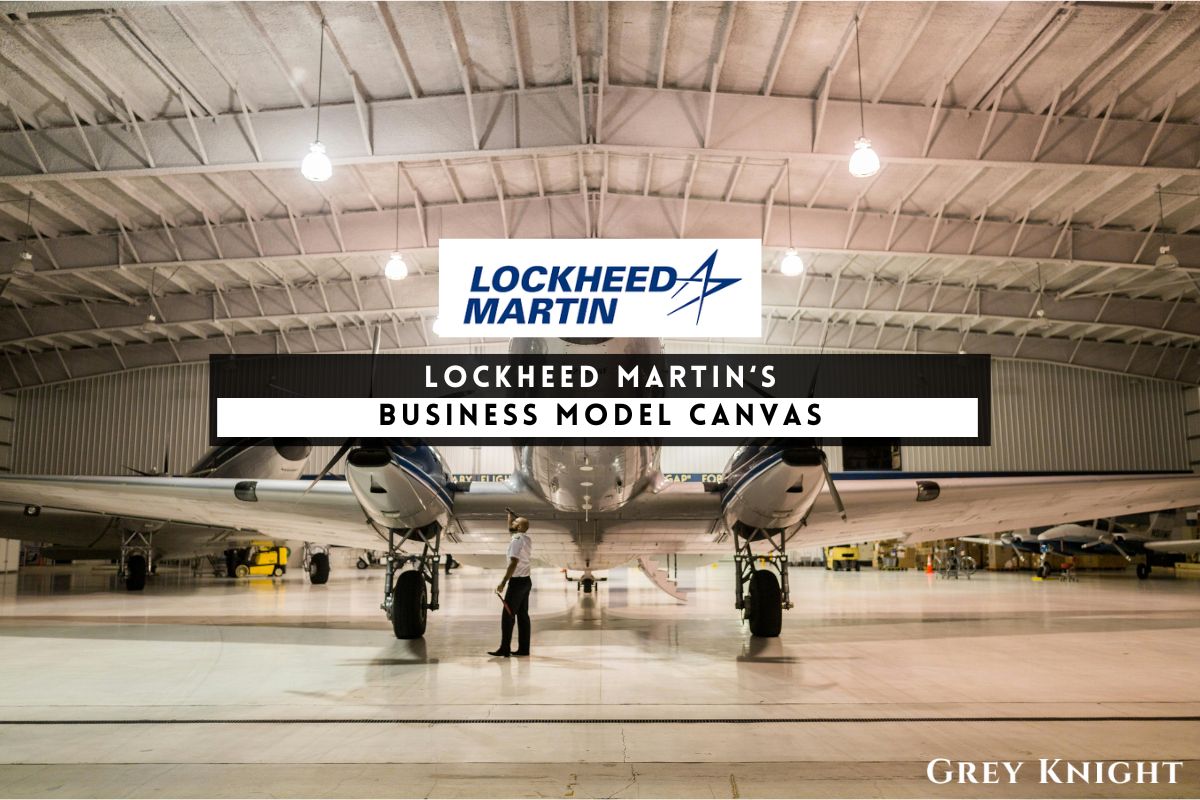Table of Contents
ToggleA Brief History of Lockheed Martin
Lockheed Martin Corporation is an American aerospace, defense, arms, security, and advanced technologies company. It was formed in 1995 through the merger of Lockheed Corporation and Martin Marietta. Both companies have a long history dating back to the early 20th century.
Lockheed Corporation was founded in 1912 by Allan Loughead in Santa Barbara, California. The company initially focused on building seaplanes and amphibious aircraft, and later became known for its military aircraft, including the P-38 Lightning and the F-117 Nighthawk stealth fighter.
Martin Marietta was founded in 1961 through the merger of the Glenn L. Martin Company and the American-Marietta Corporation. The Glenn L. Martin Company was established in 1912 and played a significant role in the development of military aircraft and aerospace technologies.
In the mid-1990s, the merger of Lockheed Corporation and Martin Marietta created one of the largest aerospace and defense companies in the world. Since then, Lockheed Martin has been involved in the development and production of a wide range of military and civilian technologies, including fighter jets, missile defense systems, spacecraft, and advanced electronics.
Today, Lockheed Martin continues to be a major player in the global aerospace and defense industry, providing advanced technology solutions for a wide range of government and commercial customers.

Who Owns Lockheed Martin?
Lockheed Martin Corporation is owned by a diverse group of shareholders, with the largest being institutional investors such as Vanguard Group, BlackRock, and State Street Corporation. These institutions hold significant stakes in the company and play a key role in influencing its direction and strategy. Other major shareholders include individual investors and mutual funds. The top 10 shareholders of Lockheed Martin Corporation are as follows:
1. Vanguard Group
2. BlackRock
3. State Street Corporation
4. Capital International Investors
5. Fidelity Management & Research Company
6. Geode Capital Management
7. JP Morgan Chase & Co.
8. Bank of America Corporation
9. Northern Trust Corporation
10. Loomis Sayles & Company
Lockheed Martin Mission Statement
Lockheed Martin Corporation’s mission is to be the global leader in providing innovative and reliable aerospace and defense solutions that advance the security and well-being of nations around the world. They are dedicated to creating value for their customers, employees, and shareholders through a commitment to excellence, integrity, and ethical business practices. Their focus is on delivering high-quality products and services that meet the evolving needs of their customers and contribute to the advancement of technology and security on a global scale.
How Lockheed Martin Makes Money?
Lockheed Martin Corporation operates on a business model that focuses on providing advanced technology and product solutions to government customers, primarily in the defense and aerospace sectors. The company generates its revenue primarily through contracts with government agencies for the development, production, and support of military hardware and technology, including aircraft, missiles, and electronic systems. Additionally, Lockheed Martin offers related services such as cybersecurity, logistics, and training support. The company’s revenue stream is derived from both domestic and international sales, with a focus on maintaining long-term relationships and securing new contracts for its cutting-edge products and services.
Lockheed Martin Business Model Canvas
The Business Model Canvas is a strategic management tool that allows companies to visualize, analyze, and plan their business model. It consists of 9 key elements that help organizations understand and communicate their value proposition, target customers, key activities, and revenue streams. By using this framework, companies can identify opportunities for improvement and develop a clear understanding of how their business operates.
Customer Segments:
1. Lockheed Martin Corporation targets various customer segments including government agencies, defense organizations, and aerospace companies.
2. The company also caters to commercial customers in the aerospace and defense industry.
3. Lockheed Martin’s customer segments include both domestic and international markets, providing a diverse and global customer base.
Value Propositions:
1. Lockheed Martin offers cutting-edge technology, innovation, and expertise in the aerospace and defense industry.
2. The company provides high-quality products and services that meet the needs of its customers in terms of security, defense, and technological advancements.
3. Lockheed Martin’s value propositions include a focus on sustainability, safety, and reliability in its products and services.
Channels:
1. Lockheed Martin utilizes various channels to deliver its products and services, including direct sales, partnerships, and collaborations with government agencies and industry partners.
2. The company also leverages digital channels, online platforms, and technologies to reach its target customers and provide support and assistance.
3. Lockheed Martin’s channels involve a multi-faceted approach to engage with its customers and stakeholders.
Customer Relationships:
1. Lockheed Martin fosters strong customer relationships through personalized support, after-sales service, and ongoing communication with its clients.
2. The company emphasizes trust, reliability, and collaboration in its customer relationships, aiming to build long-term partnerships with its clients.
3. Lockheed Martin’s customer relationships are based on a consultative approach, understanding the unique needs and requirements of its customers.
Revenue Streams:
1. Lockheed Martin generates revenue from the sale of its aerospace and defense products, including aircraft, missiles, and space systems.
2. The company also earns revenue from service contracts, maintenance, and support services for its customers.
3. Lockheed Martin’s revenue streams encompass a diverse range of products and services, catering to both government and commercial markets.
Key Resources:
1. Lockheed Martin’s key resources include its skilled workforce, technological expertise, and intellectual property rights.
2. The company relies on its manufacturing facilities, research and development capabilities, and strategic partnerships as key resources to deliver its products and services.
3. Lockheed Martin’s key resources also involve the use of advanced technologies, materials, and supply chain management.
Key Activities:
1. Lockheed Martin’s key activities include research, design, and development of aerospace and defense technologies.
2. The company engages in the manufacturing, production, and assembly of its products, ensuring quality and innovation in its operations.
3. Lockheed Martin’s key activities also involve testing, certification, and delivery of its products to its customers.
Key Partners:
1. Lockheed Martin collaborates with government agencies, defense organizations, and international partners to develop and deliver its products and services.
2. The company forms strategic partnerships with suppliers, subcontractors, and technology providers to support its operations and supply chain.
3. Lockheed Martin’s key partners include industry associations, research institutions, and academia to drive innovation and technological advancements.
Cost Structure:
1. Lockheed Martin’s cost structure includes expenses related to research and development, manufacturing, and production of its products.
2. The company incurs costs for marketing, sales, and customer support, as well as overhead expenses for administrative and operational activities.
3. Lockheed Martin’s cost structure also encompasses investments in technology, talent development, and compliance with regulatory requirements.
Lockheed Martin’s Competitors
Overall, the Business Model Canvas for Lockheed Martin Corporation showcases its strong focus on delivering value to its customers, building strategic partnerships, and maintaining a sustainable and profitable business model in the aerospace and defense industry. With a diverse customer base, innovative products and services, and a robust operational framework, Lockheed Martin continues to be a leader in its industry.
Lockheed Martin Corporation faces stiff competition in the aerospace and defense industry. Its top competitors include Boeing, Northrop Grumman, Raytheon Technologies, General Dynamics, and BAE Systems. These companies are formidable rivals in the defense contracting industry, offering a wide range of products and services that directly compete with Lockheed Martin’s portfolio. The constant innovation and technological advancements in the field of aerospace and defense keep these competitors at the forefront of the industry, challenging Lockheed Martin to continuously improve and adapt to the ever-changing market demands.
Lockheed Martin SWOT Analysis
Strengths:
1. Strong brand recognition and reputation in the aerospace and defense industry.
2. Diverse portfolio of products and services, including aircraft, missiles, and space systems.
3. Strong financial performance and large government contracts.
4. Technological innovation and extensive research and development capabilities.
Weaknesses:
1. Reliance on government contracts for a large portion of revenue.
2. Vulnerability to budget cuts and political instability.
3. Legal and ethical issues relating to government contracts and compliance.
Opportunities:
1. Increase in defense spending by governments worldwide.
2. Growth in demand for advanced military technologies and cybersecurity solutions.
3. Expansion into international markets and partnerships with foreign governments.
Threats:
1. Intense competition from other defense contractors and new market entrants.
2. Uncertainty in government policies and regulations.
3. Rapidly changing technological landscape and potential for disruptive innovations.
Concluding Analysis
In conclusion, it’s clear that Lockheed Martin Corporation has a solid and diverse business model that has allowed it to continually grow and innovate within the aerospace and defense industry. With a strong focus on research and development, strategic partnerships, and a commitment to excellence, the company is well-positioned for future success. As an analyst, I believe that Lockheed Martin’s continued investment in emerging technologies and its ability to adapt to changing global security challenges will ensure its continued prominence in the market. The company’s strong foundation and forward-thinking approach make it an exciting prospect for investors and a key player in the future of defense and aerospace.
Additional Resources
To keep learning and advancing your career, we highly recommend these additional resources:
Business Model Canvas of The Top 1,000 Largest Companies by Market Cap in 2024
A List of 1000 Venture Capital Firms & Investors with LinkedIn Profiles
Peter Thiel and the 16 Unicorns: The Legacy of Thiel Fellowship












